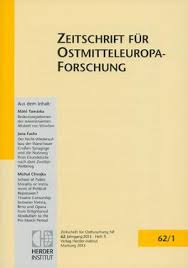„… sicut in libro de passione martiris potest propensius inveniri“. Die vermeintliche Quelle und der politische Kontext der Darstellung des „Aktes von Gnesen“ bei Gallus Anonymus
The Alleged Source and the Political Context of the Portrayal of the “Congress of Gniezno” by Gallus Anonymous
Author(s): Sven JarosSubject(s): Christian Theology and Religion, Political history, Middle Ages
Published by: Verlag Herder-Institut
Keywords: Alleged Source; Political Context; Portrayal of the “Congress of Gniezno”; Gallus Anonymous;
Summary/Abstract: In the present paper, a number of different theories and controversies surrounding the “Congress of Gniezno” – the meeting of Emperor Otto III and Bolesław Chrobry at the grave of Saint Adalbert in Gniezno in the spring of 1000 – are compared and discussed. In doing so, a new aspect of interpretation which may shed new light on some of the hitherto existing questions is brought into the discussion. The chronicle of Gallus Anonymous plays a key role in the “Gniezno” research. Its significance is mainly due to the assumption that the chronicler had recourse to a vita of Saint Adalbert that has since been lost for his portrayal of the event. Yet on closer inspection, it seems reasonable to doubt that he ever relied on such an account and to seek an alternative explanatory approach for Gallus’ portrayal. In order to do so, it is necessary to visualise the political context in Central Europe in 1100 when the Chronicle was written. If one considers the coronation of Vratislav II, Duke of Bohemia in 1085 as described in a charter of Henry IV and later by Cosmas of Prague, literal similarities and structural equivalences between this coronation and that described by Gallus are obvious. Further observations of the context in which it originated thus lead to the hypothesis that Gallus constructed his portrayal of the “Congress of Gniezno” as a deliberate riposte to Bohemian claims to Poland in 1100 as requested by his employer Bolesław III. It seems that with his narrative, Gallus sought to retrospectively legitimize the independent Polish coronations of 1025 and 1076 by placing them in the context of the emperor’s honorable pilgrimage. This would also fit recent research concerning the anonymous chronicler’s design principles and his possible role within the opposition to Henry IV. Nevertheless, Gallus’ depiction of the “Congress of Gniezno” is not pure fiction; rather, a historical “core” is present which is consistent with the representation of the event in the Annales Hildesheimenses. Inclusion of this source is, then, only possible after critical analysis of its content and the content of the most recent controversies, particularly emergent in the context of the works of Johannes Fried. With the reflections noted above, Bolesław’s controversial coronation as described by Gallus Anonymous can be interpreted as a legitimizing strategy in response to Bohemian claims to Poland. On this basis, the “Congress of Gniezno” can be considered to be free of the national antagonism of centuries past associated with the question of the coronation. Hereby, the significance of this extraordinary event in the history of the European Middle Ages in the politics of both religion and the church becomes clearer.
Journal: Zeitschrift für Ostmitteleuropa-Forschung
- Issue Year: 62/2013
- Issue No: 4
- Page Range: 555-580
- Page Count: 26
- Language: German

